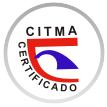Micelial growth evaluation of Pleurotus ostreatus on Jatropha curcas
Abstract
Jatropha curcas residual cake is a by-product generated during the extraction of Jatropha curcas oil. It creates a serious environmental problem by accumulating because it cannot be used as animal feed or have another useful destination, so its use would allow a solution to different environmental problems caused by both the generation and disposal of this waste and other factors of the product development of other productive sectors. The cultivation of Pleurotus ostreatus can be done in different lignocellulosic substrates, with agricultural and agroindustrial waste being the most used. The objective of this work is to evaluate the mycelial growth of Pleurotus ostreatus CCEBI 3024, in solid cultures based on extracts from the residual cake of Jatropha curcas. The study was based on cultivating the inoculum of Pleurotus ostreatus in solid medium based on residual cake extracts of toxic and non-toxic Jatropha curcas and a mixture of both in a 1:1 proportion and was compared with mycelial growth in conventional medium nutrient agar. The measurement of the mycelial growth of the fungus and the morphological description of the mycelium show the adequate growth of the mycelium of Pleurotus ostreatus in the evaluated media, allowing us to affirm that the use of the residual cake of Jatropha curcas as a culture medium to enhance mycelial growth and the formation of Pleurotus ostreatus biomass is feasible in the proposal to use this byproduct as a substrate in the production of Pleurotus mushrooms by FES
References
del hongo Pleurotus ostreatus cultivado en pulpa de café. Revista de la
Sociedad Química del Perú, 2019, 85(4). 422-431. ISSN 1810-634X
http://dx.doi.org/10.37761/rsqp.v85i4.256
2. GARCÍA-ODUARDO, Nora; BERMÚDEZ-SAVÓN, Rosa Catalina;
SERRANO-ALBERNI, Migdalia. Formulaciones de sustratos en la producción
de setas comestibles Pleurotus. Tecnologia química, 2011, 31(3). 272-282.
ISSN 2224-6185 https://l1nq.com/dpZqe
3. VARGAS-CORREDOR, Y.A. Aprovechamiento de residuos agroindustriales
para el mejoramiento de la calidad del ambiente. Revista Facultad de Ciencias
Básicas, 2018, 14(1). 59-72 ISSN 1900-4699
http://dx.doi.org/10.18359/rfcb.3108
4. CABRALES-RODRÍGUEZ, R.A., et al. Cultivo del piñón (Jatropha curcas l.);
manejo nutricional y usos en Córdoba, Colombia. Universidad de Córdova,
Colombia, 2023. ISBN: 978-958-48-7154-1 https://acesse.dev/R0EQJ
5. SHARMA, S., et al. Jatropha curcas: a review. Asian Journal of Research in
Pharmaceutical Science, 2012, 2(3). 107-111. ISSN-2231–5659
https://acesse.dev/Jf0Lq
6. RODRÍGUEZ-CALLE, R.M. et al. Caracterización de la torta obtenida del
prensado del fruto de Jatropha curcas. Pastos y forrajes, 2016, 1(39). 72-75.
ISSN 2078-8452. http://scielo.sld.cu/pdf/pyf/v39n1/pyf10116.pdf
7. TRUJILLO-MARTÍNEZ, M.A. El Uso de los Residuos Agroindustriales y la
Fermentación Sólida para la Producción de Enzimas de Interés Industrial.
TecnoCultura, 2016, 6-16. ISSN: 1870-7157.
https://tecnocultura.org/index.php/Tecnocultura/article/download/227/248
8. BERMÚDEZ-SAVÓN, R.C., et al. Conversión de residuales agroindustriales
en productos de valor agregado por fermentación en estado sólido. Tecnología
química, 2014. 34(3). 263-274. ISSN: 2224-6185.
http://scielo.sld.cu/pdf/rtq/v34n3/rtq05314.pdf
9. BERMÚDEZ -SAVÓN, R.C., et al. Fermentación sólida para la producción de
Pleurotus sp. sobre mezclas de pulpa de café y viruta de cedro. Tecnología
Química, 2007. 27(2). 55-62. ISSN: 0041-8420.
https://www.redalyc.org/pdf/4455/445543753009.pdf
10. PERALTA, J. Cultivo y caracterización de cepas nativas del hongo del
guachipilín (Pseudofistulina radicata (Schwein.) Burds.), bajo condiciones
controladas fase I (en línea). Proyecto de investigación del Instituto de
Investigaciones Agronómicas Facultad de Agronomía. San Carlos, Guatemala,
Universidad San Carlos. 2019.
https://digi.usac.edu.gt/bvirtual/informes/puidi/INF- 2019- 05.pdf
11. ESTRADA SALAZAR, Gloria Inés; RAMÍREZ GALEANO, Martha Cecilia.
Micología general. 2019. ISBN: 978-958-52337-1-3
https://repositorio.ucm.edu.co/bitstream/10839/2654/1/Micologia_general.pdf
12. MARTÍNEZ, D. A., et al. Evaluación del crecimiento micelial de Pleurotus
ostreatus y Agrocybe aegerita sobre orujos de pera. Anales de Biología 2015.
37. 1-10. ISSN: 1989-2128. http://dx.doi.org/10.6018/analesbio.37.1
13. ALBÁN-MÁRQUEZ, L. Cultivo del hongo ostra (Pleurotus ostreatus) en tres
tipos de residuos de la madera de Bolaína Blanca (Guazuma critina). 2018.
Tesis de Licenciatura. Universidad Nacional Agraria La Molina. Facultad de
Ciencias Forestales. Ingeniería Forestal. Lima, Perú https://l1nq.com/WqsV5
This work is licensed under the Creative Commons Attribution-NonCommercial.
![]()













 Universidad de Oriente
Universidad de Oriente 